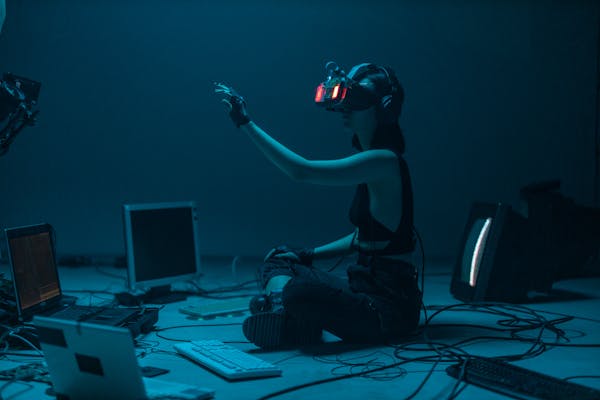Many tools exist that help users discern whether text is machine-generated. They typically analyze writing patterns to identify deviations from typical human authorship.
These tools are not foolproof, though. Reliable fact-checking platforms and cross-referencing can also help verify content authenticity. Learning how to spot AI writing is a vital skill as it becomes more common, especially for high-stakes fields like healthcare and finance where precise information can be life or death.

1. Unusual phrasing
While AI can’t produce glaring grammar errors, it often produces awkward phrasing and overly complex sentence constructions. It also may lack the ability to rephrase or use colloquialisms, which are common indicators of human authorship.
Linguists recommend looking out for unusual vocabulary and word combinations. Additionally, it’s important to pay attention to the context of the text. A natural writer will reference credible sources, while an AI will likely misinterpret contextual clues or include outdated information.
In the future, we could see tools that flag when a piece of content is machine generated. But in the meantime, individuals can protect themselves by learning how to spot AI writing. You don’t need a degree in computer science or an expensive toolkit, just a keen eye. Find out more at Spotting machine-written text.
2. Contextual inconsistencies
While AI models have come a long way, they’re still limited in terms of what they can do. This is why it’s important to know how to identify AI-generated copy so that you can make informed decisions about what you read.
One of the best ways to spot machine-written text is by looking for inconsistencies in writing style or context. This could include sudden changes in tone, vocabulary, or grammar. It’s also worth paying attention to logical errors in the text, such as when it makes an implausible claim or presents disjointed arguments.
Moreover, the use of colloquialisms is another sign that AI may be involved. Unlike human writers, AI models struggle to understand contextual meaning and often misinterpret idioms. This is because they don’t understand the underlying sentiment of the phrase or its meaning in relation to other words.
3. Unreliable facts
Many AI tools confidently assert inaccurate or misleading facts. This problem is particularly serious for industries like healthcare and finance, where precise information can make the difference between success and failure (or even life and death). Fortunately, there are now numerous tools that help people spot AI-generated text by identifying common patterns and cross-referencing stated facts against reputable sources. As these technologies continue to improve, learning to spot AI writing will become an essential skill for internet users of all stripes. Until then, learn to recognize these clues by checking out the following tips.
Awkward phrasing, unusual vocabulary, and contextual inconsistencies are all indicators of potential machine-authored content.
4. Unusual vocabulary
While AI writing is becoming more sophisticated, it can be difficult to spot. Whether you’re choosing a recipe, reading an article or entering your credit card details online, it’s important to know how to identify machine-generated content to avoid potential scams and misinformation.
Linguists recommend scrutinizing word usage patterns to detect unusual vocabulary. AI often misuses idioms and interprets colloquialisms literally, which can be a telltale sign of machine authorship.
While there are numerous tools on the market that help people discern human from AI writing, it’s also important to rely on independent research. These five tips will help you spot machine-generated text so that you can make informed decisions about the content you consume. It may take some practice, but eventually you’ll be able to recognize the difference with confidence.
5. Lack of creativity
AI writers tend to struggle with creativity, resulting in content that doesn’t feel natural or relatable. For example, a common sign of machine writing is lack of flow, which may be evident in unnatural transitions or text that feels like it’s being retold over and over again. In contrast, human content has a more natural progression that’s easy to follow. Additionally, creative content often includes a level of surprise that’s hard for AI to replicate. You can also look for signs of creative writing by examining the overall structure of the text to see how well it follows an expected narrative.